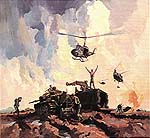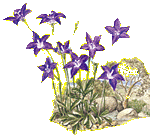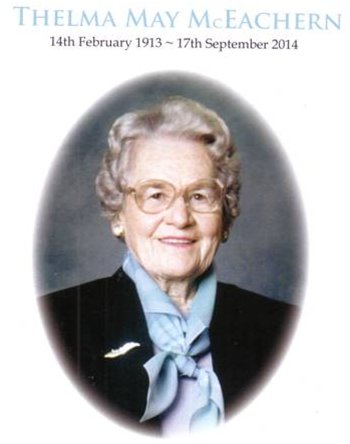
Lt Thelma Bell-McEachern was the last surviving nurse of Sister Bullwinkle nurses that served in Malaya during WW2.
Her Husband was one of my first bosses he was WO1 Reg McEachern RAEME.
Thel passed away on the 17Sep14. This is her Eulogy, written by WO1 Bob Thompson (Ret)
Thelma May Bell McEachern.
Aged 101
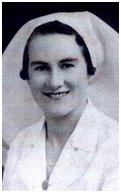
Thelma asked me about 20 years ago to do her eulogy and at the time we had a laugh about it as I said I would have to get everyone to bring a cut lunch as it would take hours/days to deliver. Don’t worry I have reduced her story to just today.
A couple of years ago I had to have a quadruple bypass and just before I went into hospital Thel rang me and said, ‘Don’t you die on me I still expect you to do my eulogy.’
I have known Thelma and count her as my best friend since 1954 I was posted to Puckapunyal to 1st Armoured Regiment LAD. When I arrived there, there was this big Warrant Officer 1 built like a country outhouse who was the boss, I asked him what his name was he told me it was SIR, I later come to know him as Reg. McEachern. I later met his wife Thelma.
Thelma May Bell was born in Sydney on the 14 Feb 1913. The family consisted of a sister, Irene and two brothers Allen and Ken.
Thelma was sent to Albury when she was about 5 years old to live with her Aunt Kate, her mother’s sister, and her husband Jim Bourke, the reason was that Thel’s father had broken his back and this forced her Mum to go to work to support her family.
Social Security did not exist then and it was just too bad for anyone who fell on hard times. At one time Thel’s mum had her husband and two sons in three separate hospitals and she would visit them all every day.
Thelma’s mother got 5 shillings for scrubbing the floors and doing washing at hotels or where ever she could get such work. It wasn’t unusual those days, especially for large Catholic families to seek help in bringing up families especially if some of the members of your own family was reasonable well off such as the Bourke in Albury.
The Bourkes sent Thelma to St Patrick’s Parish school in Olive St, Albury NSW, then she went to St Josephs until she was 17 years of age. She then started her career as a nurse at Albury Base Hospital, it was 1930.
Thelma told me many years ago it was very hard work and as a student nurse she was working at least 72 hours a week all for 10 shillings and the thing that got up her nose was if you broke anything you had to pay for it out of your 10 shillings.
Thel claimed they were no more than paid domestics and if your day off fell when there was a lecture day it was too bad. She said they had to attend lectures.
Thel also was critical of the charge nurses; she reckoned they would often confuse discipline with punishment and she at that time thought the food was terrible. So you see she thought she was a slave within the system.
She remembered that on at least one occasion Matron McAlister who was a tough taskmaster gave her own meal to a nurse who only had a sav on her plate.
As you can see after Thel told me I was to deliver her eulogy I started to keep notes on the early part of her life.
Thel also told me that notwithstanding the hardships of her apprenticeship as a nurse she remembered they were the happiest and best years of her life and she made wonderful friendships that lasted all their lives.
Thel came unstuck at the end of her third year in her four year training when she contacted a virus that affected her heart and ultimately led to her losing her place on the staff.
In 1935 when Thel was 22 years of age a dreadful outbreak of flu laid Albury and district low and the authorities were forced to recall all nurses to come to the hospital to help.
Thel was refused permission to do her last year to become a nursing sister and it took her approach to her local member of Parliament Mr Alex Mair who took up her case and had her reregistered as a nurse and got permission for Thel to finish her training. She graduated after 7 years instead of the usual four. She was 24 years of age.
Sister Thelma Bell stayed on at the hospital and it was at this time she met her future husband Reg McEachern who arrived at the hospital to have his tonsils removed. Thel said at first she didn’t like him as he was a cheeky bugger but he was as she said a handsome brute. One of Thels many stories was she loved to go dancing and had to be back at the hospital by 11 pm and after that the doors were locked. She said many a time she would return late with her then boy friend Reg and because he was so tall and big she used to enter the nurses quarters via a window on the ground floor that was set rather high up.
Before the war started Thelma had joined the Army Nursing Reserve at the encouragement of Matron McAlister who had
served in WW1.
So VX39349 Lieutenant Thelma May Bell was called up in January 1941 and within 3 weeks was in the Army.
She had medical checks, issued army cloths and equipment, took the oath of Allegiance and was given a short leave. On reporting back to Victoria Barracks she was given vaccinations and with her kitbag and trunk she was taken to Spencer Street and boarded a troop train to Sydney then as a member of 10th Australian General Hospital boarded the Queen Mary with the rest of the 8th Division. She and along with 7,000 troops set sail on Tuesday the 4th February 1941.
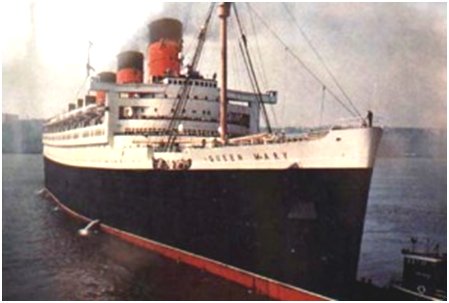 On that day early in the morning I was on the bluff at North Head to see the Queen Mary sail. As the Queen Mary came level with the Heads the band on the Queen Mary struck up Haere Ra, the Maori Farewell, and as one, the whole ship 7,000 of them including Lt Thelma May Bell sang the words, ‘Now is the hour when we must say goodbye’ you could hear it plainly and they sang it a couple of times as the ship got closer to the waiting convoy which was in plain sight out to sea, the song faded away. I still remember that morning very clearly, it sent goosebumps up my spine. Of course I didn’t know Thel then and it was many years after I found out she was one of the singers on board that day.
On that day early in the morning I was on the bluff at North Head to see the Queen Mary sail. As the Queen Mary came level with the Heads the band on the Queen Mary struck up Haere Ra, the Maori Farewell, and as one, the whole ship 7,000 of them including Lt Thelma May Bell sang the words, ‘Now is the hour when we must say goodbye’ you could hear it plainly and they sang it a couple of times as the ship got closer to the waiting convoy which was in plain sight out to sea, the song faded away. I still remember that morning very clearly, it sent goosebumps up my spine. Of course I didn’t know Thel then and it was many years after I found out she was one of the singers on board that day.
Thelma and 60 other nurses were soon hard at work on the Queen Mary as the ship wasn’t designed for tropical use, hence the troops came down with stomach troubles, respiratory tract infections and lots of eye problems.
Thel told me that when they arrived in Singapore they had 600 patients and had to set up a hospital straight away. They got that sorted out and next they were sent up to Malacca a village 150 miles north of Singapore. They took over an old uninhabited hospital built right on top of a hill that at night stood out like a beacon. She said it had no shutters and no fly screens and they had to sleep on palliasses, for those of you that don’t know what a palliasses is its a large cloth bag that you fill with, you hope clean straw and they then sleeped on the floor. Later the Army built huts to house the nursing staff and doctors.
Thel said life wasn’t easy, we had language problems with the Malayan and Chinese staff and the humidity was so great they had to change their uniforms at least twice a day. The hospital was very primitive, we used kerosene 4 gallon tin sterilizers and spirit stoves until better gear arrived much later.
The troops were plagued with all types of shin complaints caused by training and wearing dyed uniforms. You know the government never learns we had the same trouble in Vietnam with dyed uniforms giving us rashes that were so bad we all walked funny.
However the dark clouds of war were coming their way. Pearl Harbour was bombed and we were at war with the Japanese. Each day the news was getting worse and more depressing, the Japanese were attacking in the North and our troops were under attack with air raids being constant. The Japanese were moving fast, some started to turn up on bicycles. Our wounded were increasing and eventually we had to move south and as we went, we took our wounded with us and at each stage we took over many homes and at this stage we are living in tents. At one time our tent received a dose of shrapnel. Sleep became a luxury. We at last reached the Straits of Johore which we crossed into Singapore. Every day we were being shelled and suffered heavy bombing.
Our 60 nurses set up a new hospital in a girl’s school in Singapore. Casualties were increasing, at one stage we were trying to care for over 1000 wounded.
The Japanese had landed on the Island and all the nurses were ordered to evacuate. Thel told me, had any of the nurses been given a choice they would have preferred to stay with their wounded.
On the 11th of February 1942 six of them were told to evacuate 450 wounded. Sister Mittelheuser and Thel were working on the same ward that morning, Matron Pashe told them to make up their mind who was to go with the patients. They tossed a coin and Thel won so she and her long time friend Sister Molly Campbell along with Sisters Aileen Irving, Veronica Sawyer, Vi Haig, Iva Craig, took the troops amidst machine gun and shellfire which they came under as they traveled to the docks and boarded the Chinese vessel ‘Wah Sui’.
‘As we left Singapore Harbour’, Thel said they were shelled. Mits remained in Singapore and became a POW. She died on the day the peace treaty was signed. When you think about it Thel was saved from being a prisoner of war by the toss of a coin.
Our duty now was to care for the 450 wounded we had on board. The Captain of the ‘Wah Sui’ was English but most of the crew were Chinese, Thel said they seen very little of them. Also taken on board were women and children who had stayed in Singapore despite orders issued many weeks before to evacuate the island. They bought with them, their trunks, suitcases even golf sticks. Had they obeyed those orders we could have taken on a further 100 of our wounded. Thel said looking after 450 wounded and there being only 6 of them they were run off their feet.
The English civilians on board were mostly in a panic and would not help the wounded in any way. They even refused to help an Asian women, who had to have her baby on the deck because they refused to give up any of their accommodation.
We finally berthed in Batavia which to-day is known as Djakarta, where our patients which included Indians were taken onto 12th AGH in Kandia, India. We were told our services were no longer required and we were asked to leave the ship.
We found ourselves in an evacuee camp in Batavia so we gave our services to the Dutch Nuns who were helping in the camp. The Japanese were infiltrating into Java and once again we were experiencing air raids and being bombed. We tried to get out of the place, we approached the HMAS Perth who was in port and the RAAF but they wouldn’t or couldn’t help us. One day a ship arrived with the 2/2nd Pioneers on board from the Middle East so after much effort our Sister in Charge, Sister Irving managed to see the commanding Officer who took us to Bandeong. While we were ashore, Bandeong was attacked so we ended up in cattle trucks back to Batavia. The 2/2nd remained in Bandeong to fight and many were killed and many taken POW’s.
While we were in Batavia the Orcades arrived with troops from the Middle East we were taken on board and disembarked in Adelaide. We at last were home in Australia. Next day they were on a train to Spencer Street station, Melbourne.
Thel told me that she will never forget there arrival in Melbourne it was cold and bleak and they were all dressed in their tropical uniforms, there was nobody there to greet them. She said it was awful, she had one kind word about that morning and it was that the Redcross were there as they met all arrivals by train at Spencer Street Station. The Redcross gave them colored cardigans to wear over their uniforms and there next move was to report to Vic Barracks to their Matron in Chief, Matron Field greeted them with a dressing down for their clothes and told them they were out of uniform. Thel said they eventually got some leave and later on reported to Heidelberg Hospital. Thel was later posted to Wangaratta Hospital where she stayed till her husband to be, Reg McEachern came home from the Middle East and they were married.
She was now Lt .Sister Thelma McEachern and was posted to Heidelberg Repat Hospital where she stayed till she became pregnant with her daughter. Thel was discharged from the Army on the 4th Jun 1943.
Thel returned to Albury, Charles Street to live with her Aunt Kate and Jim Bourke.
Anne was born 5 months later on the 25th November 1943.
Remembrance Service.
We include in this service to-day a chance to pay tribute to VX39349 Lt Thelma May Bell McEachern
who served in the defense of this, our country.
She is the holder of the
1939-45 Star;
The Pacific Star;
The Defence Medal;
The War Medal;
the Australian Service Medal;
and the Returned from Active Service Badge.
Because Thel had injured her back while nursing she was made a TPI which stands for Temporary and Permanent Incapacited.
ALL STAND as we say the ODE
‘They shall grow not old as we that are left grow old,
Age shall not weary them nor the years condemn.
At the going down of the sun and in the morning
We will remember them.’
All Present say ‘We will remember them.’
‘As a token of affectionate and proud remembrance I will place on Thel’s coffin a red poppy,
the traditional emblem of war sacrifice, and I invite all those that would like to take up a poppy and place it also on the coffin.
ALL Stand for a short silence. Lest we Forget. All say.
Last Post and then Reveille
End Of Service.
